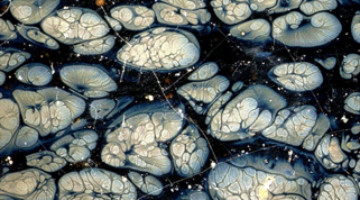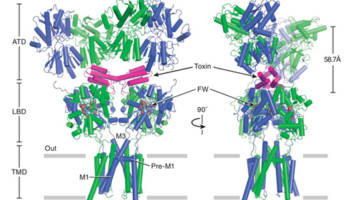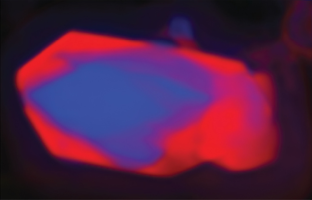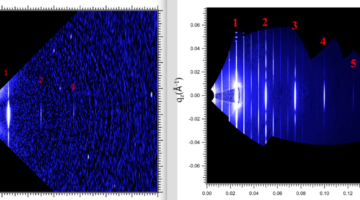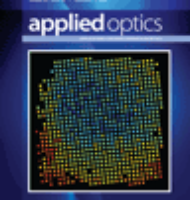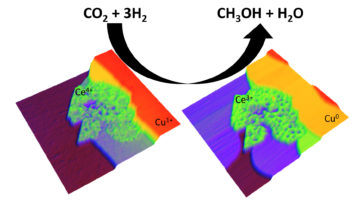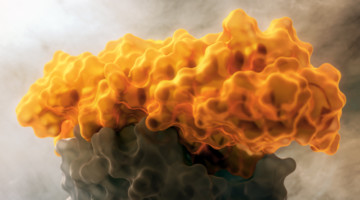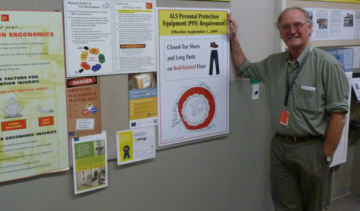New analysis of ancient Jian ware reveals that the distinctive pottery contains an unexpected and highly unusual form of iron oxide. This rare compound was only recently discovered and characterized by scientists and so far has been extremely difficult to create with modern techniques.
Read more »
All News & Updates
Brain Receptor Structures Key to Future Therapeutics
Neurotransmitter receptor proteins are critical to learning and memory. Mutations are associated with neurological and neuropsychiatric conditions including Alzheimer’s, epilepsy, and autism. Structures of two such receptors, solved by x-ray crystallography, provide a blueprint for the development of therapeutics. Read more »![]()
![]()
ALS Director’s Update: Reflections on our Past, Present, and Future
We are looking forward to an exciting and productive year at the ALS, with plans for new beamlines and capabilities coming online, and more users taking advantage of our technical and scientific expertise to produce a record number publications. At the ALS, we are encouraged by this year’s funding and are looking for new ways to focus on our core strengths while expanding partnerships to explore new opportunities. Read more »
Record-Setting Microscopy Illuminates Energy Storage Materials
Using soft x-ray ptychography, researchers at the ALS have demonstrated the highest-resolution x-ray microscopy ever achieved by imaging five-nanometer structures. The researchers used ptychographic imaging to map the chemical composition of lithium iron phosphate nanocrystals, yielding important new insights into a material of high interest for electrochemical energy storage. Read more »![]()
![]()
New ALS Technique Guides IBM in Next-Generation Semiconductor Development
A new measurement technique developed at the ALS is helping guide the semiconductor industry in next-generation nanopatterning techniques. NIST and IBM researchers collaborated on the technique, which allows scientists to evaluate the 3D buried features inside a film. The ALS is currently the only place in the world that has such capability.
Advances in Lithography
Work featured on Applied Optics cover from ALS Beamline 11.3.2. Field-dependent wavefront aberration distribution of an extreme ultraviolet single-lens zone-plate microscope, recovered by the gradient descent algorithm customized for partially coherent imaging and targeted for fast and accurate retrieval. Read more »
An Evolutionary Arms Race for Sulfur
Recent work at the ALS shows that the viruses infecting sulfur-oxidizing bacteria in the deep sea carry bacterial genes for the oxidation of elemental sulfur. Although the viruses themselves cannot use the sulfur, they likely supplement bacterial sulfur oxidation and then exploit the generated energy for viral replication. Read more »
From CO2 to Methanol via Novel Nanocatalysts
Researchers have found novel nanocatalysts that lower the barrier to converting carbon dioxide—an abundant greenhouse gas—into methanol—a key commodity used to produce numerous industrial chemicals and fuels. In one case, it worked almost 90 times faster than catalysts commonly used for this reaction today. Read more »![]()
![]()
Designer Proteins Target Epstein-Barr-Virus-Associated Cancer
Researchers used new protein design approaches to develop a potential inhibitor of Epstein-Barr-Virus-associated cancer. The study shows not just how to help defeat the virus, but also opens up a whole new way to design proteins against viruses and ultimately, cancer. Read more »![]()
![]()
Scott Taylor, ALS Safety Manager
The new Safety Manager at the ALS, Scott Taylor, is not so new. Taylor has been working at Berkeley Lab for 30 years now, starting in his early days as a biofuels researcher working with Melvin Calvin. Taylor isn’t new to safety either—he has been on the Lab’s Safety Review Committee since 1992 and the division safety coordinator for Life Sciences for the past six years. Read more »
- « Previous Page
- 1
- …
- 127
- 128
- 129
- 130
- 131
- …
- 139
- Next Page »
